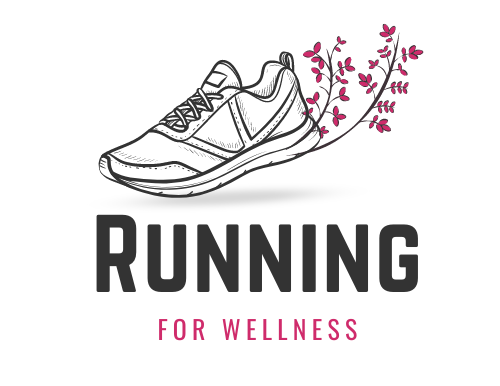No matter how disciplined your workouts are, certain everyday habits can quietly erase your results. These “progress killers” are not always obvious — they can include sleep patterns, nutrition timing, stress management, and even your social choices.
The truth is, fitness is not built in the gym alone; it’s built through a 24-hour cycle of choices that either support or sabotage recovery, muscle growth, and overall performance. If you want consistent results, you must identify and correct the habits that are slowing you down.
Table of Contents
Toggle1. Skipping Recovery Days
Training without adequate rest can trigger overtraining syndrome, a condition marked by decreased performance, persistent fatigue, irritability, and even hormonal imbalances. Muscles sustain microtears during intense workouts, and the repair process — which leads to strength and size gains — primarily happens during recovery. Without that downtime, your body never fully adapts to the training stress.
How to fix it: Schedule at least one full rest day per week for moderate training programs, and up to two for high-intensity or heavy lifting programs. Use active recovery strategies like light walking, stretching, or mobility work to promote circulation without adding stress.
| Risk | Impact | Solution |
| No rest days | Stalled progress, increased injury risk | Schedule 1–2 rest days weekly |
| Excessive intensity | Elevated cortisol, poor recovery | Mix light and intense sessions |
2. Poor Sleep Quality
Sleep isn’t just about feeling rested — it’s a biological necessity for muscle recovery and hormonal regulation. Growth hormone and testosterone production peak during deep sleep cycles, while inadequate sleep elevates cortisol, which can break down muscle and store fat. Even a small reduction from 8 to 6 hours a night can lead to slower reaction times, reduced endurance, and diminished strength.
How to fix it: Establish a consistent sleep schedule, avoid bright screens 1–2 hours before bed, and maintain a cool, dark sleeping environment. Athletes should aim for 7–9 hours of quality sleep for optimal performance.
| Hours of Sleep | Recovery Quality | Training Outcome |
| 8–9 | Excellent | Strong performance, reduced injury risk |
| 5–6 | Poor | Weakness: slower progress |
3. Inconsistent Nutrition

Fitness requires caloric and macronutrient consistency. Missing meals or eating drastically different amounts each day can disrupt glycogen replenishment, impair workout performance, and cause unpredictable weight fluctuations. This is especially damaging for those doing strength training, where steady protein intake is critical for muscle repair.
How to fix it: Track your daily intake for at least two weeks to identify patterns. Aim for evenly spaced meals every 3–4 hours, each containing a balance of protein, complex carbs, and healthy fats. Don’t skip post-workout nutrition — your body is primed to absorb nutrients in that window.
| Problem | Effect on Body | Correction |
| Skipping breakfast after a workout | Delayed recovery | Prepare overnight oats or shakes |
| Long gaps between meals | Energy dips, muscle breakdown | Plan snack breaks |
4. Excessive Alcohol Consumption
Alcohol slows protein synthesis, disrupts sleep, dehydrates the body, and can add hundreds of empty calories per sitting. Frequent drinking sessions, even just on weekends, can keep you in a cycle of dehydration and fatigue that stalls progress. If drinking has moved beyond moderation and is affecting your training, relationships, or work, professional help may be necessary. In those cases, reaching out to an alcohol addiction treatment center can be a life-changing step for both physical health and overall well-being.
How to fix it: Limit alcohol to special occasions, alternate drinks with water, and avoid drinking right after workouts. For maximum progress, consider a period of complete abstinence during training cycles.
| Alcohol Effect | Fitness Consequence |
| Dehydration | Poor endurance, cramps |
| Sleep disruption | Reduced muscle recovery |
| Extra calories | Fat gain |
5. Sedentary Lifestyle Outside the Gym

An hour at the gym doesn’t erase 12 hours of sitting. Prolonged inactivity can reduce calorie expenditure, slow metabolism, and weaken postural muscles. This is sometimes called “active couch potato” syndrome — people who exercise regularly but are otherwise sedentary.
How to fix it: Incorporate short movement breaks every hour. Take phone calls standing, use stairs instead of elevators, and aim for 7,000–10,000 steps daily on top of your structured exercise.
| Daily Steps | Activity Level | Effect on Fitness |
| <3,000 | Sedentary | Minimal calorie burn |
| 7,000–10,000 | Active | Better cardiovascular health |
6. Poor Hydration Habits
Even mild dehydration (as little as 1–2% body weight lost in fluids) can impair physical performance and cognitive function. Water is essential for nutrient transport, joint lubrication, and temperature regulation, all vital for exercise.
How to fix it: Drink water consistently throughout the day instead of chugging it right before workouts. For moderate exercisers, 2–3 liters per day is a good target; for those training in heat, needs may be higher. Include electrolyte-rich fluids if sweat loss is significant.
| Hydration Status | Physical Effect |
| Well-hydrated | Optimal muscle contraction |
| Dehydrated | Fatigue, poor strength output |
7. Chronic Stress

Chronic stress leads to elevated cortisol, which not only promotes fat storage but also suppresses immune function and delays recovery. Stress also impacts mental focus, making workouts less effective.
How to fix it: Use mindfulness, journaling, or light cardio to manage stress levels. Ensure that your training plan is challenging but not so intense that it becomes another stressor on top of daily life.
| Stress Level | Hormonal Response | Impact |
| High | Elevated cortisol | Muscle breakdown, fat gain |
| Low | Balanced hormones | Steady improvement |
8. Overreliance on Processed Foods
Packaged convenience foods may save time, but they often lack the vitamins, minerals, and fiber needed for optimal recovery and energy. Many are high in refined sugars and trans fats, which cause blood sugar spikes and crashes.
How to fix it: Replace at least half of your processed food intake with whole foods like vegetables, fruits, lean proteins, and whole grains. Plan to have nutritious snacks available so you’re not relying on vending machines or fast food.
| Food Type | Nutrient Density | Effect |
| Processed snacks | Low | Energy spikes and crashes |
| Whole foods | High | Stable energy and recovery |
9. Lack of a Structured Training Plan
Without a plan, workouts tend to lack progression. Progress in strength or endurance comes from gradually increasing training load (progressive overload). Random training makes it hard to measure improvement and easy to fall into plateaus.
How to fix it: Follow a periodized program that specifies exercises, weights, sets, reps, and progression over time. Regularly track performance metrics and adjust accordingly.
| Plan Type | Outcome |
| Structured | Measurable progress |
| Random | Stagnation |
10. Unrealistic Goal Setting
Aiming to lose 20 pounds in a month or double your bench press in two weeks sets you up for disappointment. Unrealistic goals cause burnout, extreme dieting, and eventually quitting.
How to fix it: Use SMART goals — Specific, Measurable, Achievable, Relevant, and Time-bound. Break long-term goals into smaller milestones so you can celebrate progress along the way.
| Goal Style | Result |
| Realistic | Consistent progress |
| Unrealistic | Frustration, dropout |
11. Neglecting Mobility and Flexibility Work

Strength and endurance training often take priority, but skipping mobility and stretching can limit your range of motion, increase injury risk, and make certain exercises less effective. Tight muscles and stiff joints can also affect posture, leading to chronic discomfort.
How to fix it: Include at least 10–15 minutes of mobility work before workouts and stretching after. Yoga, dynamic warm-ups, and foam rolling are all effective ways to maintain flexibility.
| Habit | Impact on Fitness | Solution |
| No mobility training | Reduced range of motion, higher injury risk | Add warm-up and cool-down sessions |
| Ignoring flexibility | Poor posture, muscle imbalances | Stretch regularly |
12. Overdoing Cardio at the Expense of Strength Training
Cardio supports cardiovascular health and calorie burn, but relying on it exclusively can result in muscle loss and a slower metabolism. Strength training builds lean muscle, which improves long-term calorie expenditure and physical capability.
How to fix it: Maintain a balanced program with both resistance training and cardio. For most people, 2–4 strength sessions and 2–3 cardio sessions per week is an effective mix.
| Habit | Impact on Fitness | Solution |
| Too much cardio | Muscle loss, reduced strength | Include regular resistance training |
| No strength training | Weakness, slower metabolism | Lift weights or use bodyweight exercises |
13. Ignoring Warm-Ups and Cool-Downs
Jumping straight into intense exercise without preparing your muscles and joints can lead to strains or sprains. Skipping cool-downs can leave you feeling sorer and delay recovery.
How to fix it: Spend at least 5–10 minutes warming up before each workout with light cardio and dynamic stretching. Follow up with static stretches or light activity to gradually bring your heart rate down.
| Habit | Impact on Fitness | Solution |
| No warm-up | Higher injury risk | Add pre-workout activation |
| No cool-down | Slower recovery | End workouts with light stretching |
14. Training Through Injury
Pushing through pain can turn a minor strain into a serious injury, setting you back weeks or even months. Many athletes mistake pain for normal soreness and end up aggravating the problem.
How to fix it: Learn the difference between normal post-exercise soreness and pain that signals injury. Rest and seek professional assessment when needed. Modify workouts to avoid stressing the injured area.
| Habit | Impact on Fitness | Solution |
| Ignoring pain | Worsening injuries | Rest and seek treatment |
| No injury plan | Delayed healing | Use safe modifications |
15. Skipping Regular Health Check-Ups

Even fit individuals can have underlying health issues like nutrient deficiencies, high blood pressure, or hormonal imbalances that affect performance and recovery. Skipping check-ups means you might miss early warning signs.
How to fix it: Schedule annual physical exams and blood tests to monitor overall health. Discuss any unusual fatigue, changes in performance, or persistent soreness with a healthcare professional.
| Habit | Impact on Fitness | Solution |
| No check-ups | Undiagnosed health issues | Annual physical exams |
| Ignoring symptoms | Delayed treatment | Report changes to a doctor |
Final Thoughts
Lasting fitness results come from aligning your daily lifestyle habits with your training goals. Even if your workout program is perfect, poor recovery, inconsistent nutrition, stress, and other factors can hold you back. By addressing these 10 common mistakes, you set yourself up for sustainable progress that supports both your physical health and your overall quality of life.
Related Posts:
- Top 400 Hilarious Gym Quotes to Keep You Motivated
- How Long Does It Take to Train for a Half Marathon?
- 25 Simple Running Motivation Tips To Get You Moving
- Half Marathon Training Plan for Beginners - Simple…
- How Far Is a Half Marathon? Everything You Need to Know
- 6 Best Running Playlists Music for Every Pace and Mood







